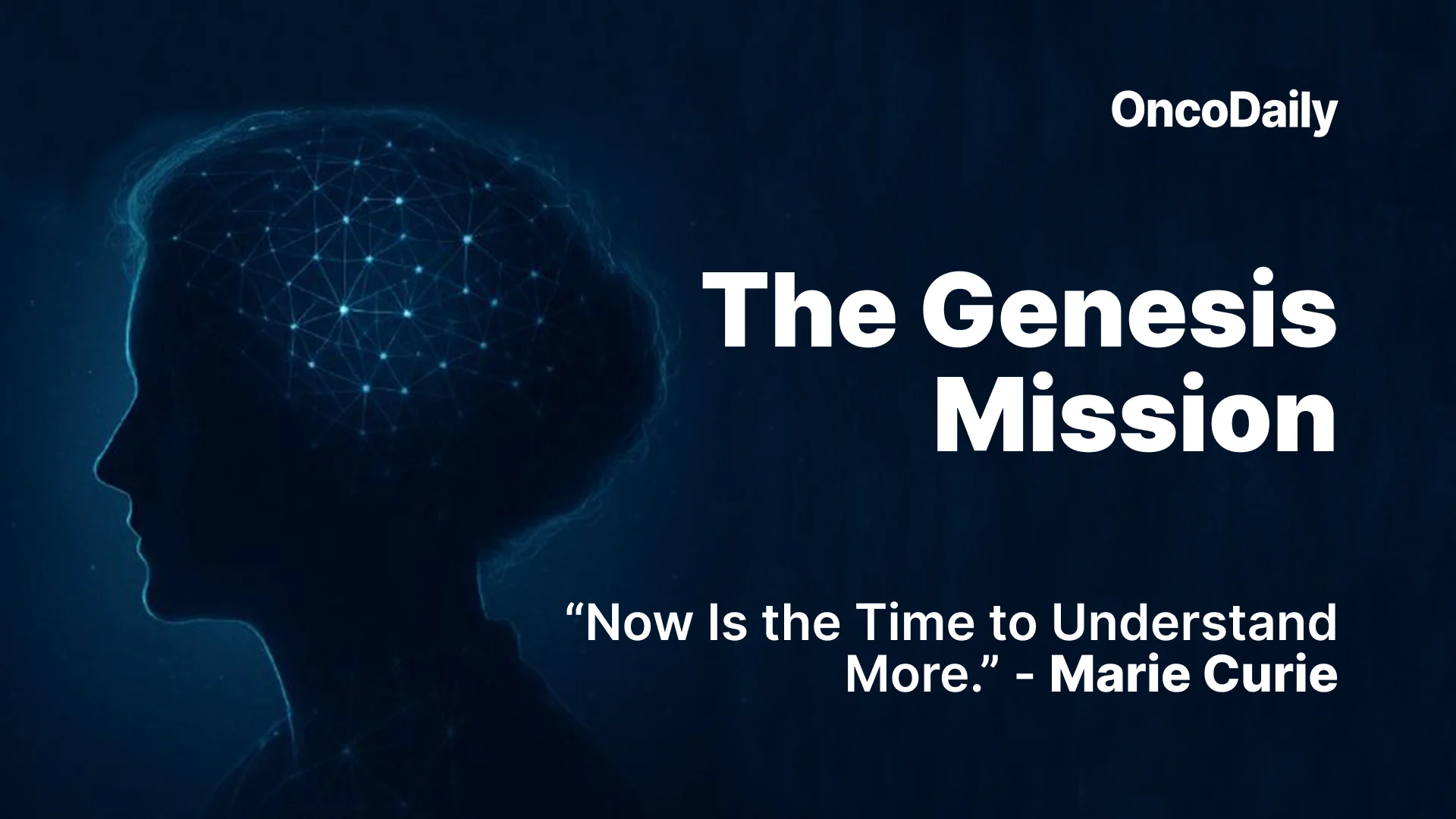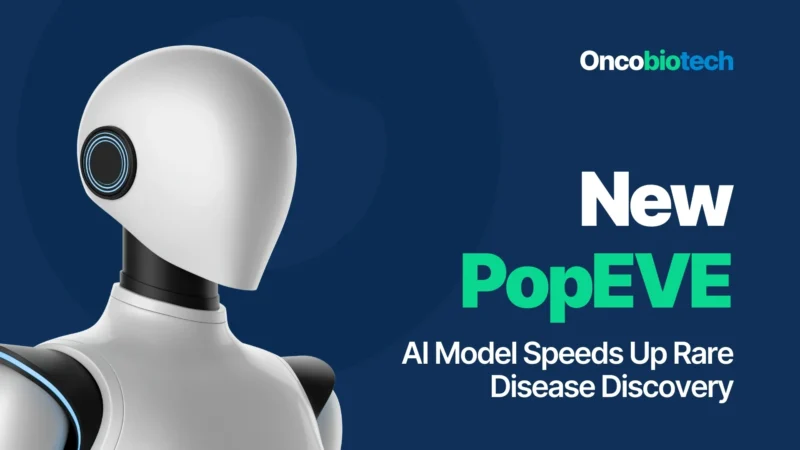“Nothing in life is to be feared, it is only to be understood. Now is the time to understand more, so that we may fear less.”
— Marie Curie
A historic shift unfolded in Washington this week. The White House announced an Executive Order establishing the “Genesis Mission”, a sweeping national initiative that marks the most ambitious federal investment in scientific innovation since the original Manhattan Project. Where that wartime effort harnessed the power of fission, this mission seeks to harness the power of synthesis bringing together artificial intelligence, federal datasets, and the full force of America’s research ecosystem to accelerate discovery.
For clinicians who have spent years at the bedside, waiting for biology to reveal its secrets, the moment feels profoundly overdue. Cancer care has always advanced stepwise; the Genesis Mission aims to turn those steps into leaps.
A National Effort Reimagined
The Executive Order positions the Genesis Mission as a coordinated push to build an integrated AI platform capable of training scientific foundation models systems fed by the world’s largest repository of federal scientific data. The Department of Energy, home to the national laboratories and many of the world’s most advanced supercomputers, has been tasked with transforming decades of accumulated datasets into computational intelligence.
This shift reflects a deeper recognition: storing data is no longer enough. The challenge now is to interpret it at a scale and speed unreachable by human analysis alone. The difference is akin to owning a vast library versus having a scholar who has memorized every book and can synthesize new insights on demand.
Understanding the Biology of Complexity
Cancer is not a single adversary. It behaves as an evolving, adaptive ecosystem—shifting, resisting, and outmaneuvering treatments in ways that linear tools struggle to capture.
The Executive Order explicitly elevates biotechnology as a national priority. For oncology, this acknowledgement is critical. It signals a move toward tools capable of representing the true complexity of disease. AI models trained across all federal biological datasets—including experimental, clinical, genomic, and synthetic data may eventually allow scientists to simulate resistance pathways before they emerge, test therapies in silico, and generate hypotheses that would have taken years to uncover through conventional research cycles.
A New Lens for Personalized Cancer Care
Precision oncology has long aspired to model the “n of 1.” The Genesis Mission brings that ambition closer to reality. With a unified national platform for AI-driven biology, researchers could one day compute the molecular trajectory of an individual patient’s tumor, forecast treatment responses, and identify vulnerabilities that would otherwise remain invisible.
In clinical terms, the promise is radical: reducing the unpredictable, and elevating the predictable. Instead of reacting to resistance, oncology could anticipate it.
Rebalancing the Human and the Technological
Technological acceleration often triggers fear that medicine will lose its human touch. The Genesis Mission proposes the opposite. By delegating the heaviest computational burdens of biology to high-performance AI systems, clinicians may gain more room to practice the art of medicine to listen, to guide, to support. The possibility that AI could eliminate the mundane rather than the humane is at the heart of this national effort.
Inside the Executive Order
The text of the order lays out a detailed framework for implementation. The Department of Energy will build and operate the American Science and Security Platform, a unified infrastructure connecting supercomputers, secure cloud environments, foundational models, robotic laboratories, and federally curated datasets.
The first 270 days will focus on identifying available computing resources, standardizing datasets, assessing robotic laboratory capabilities, and demonstrating early platform functionality. In parallel, the White House will coordinate agencies to align research priorities and identify the first set of national challenges spanning biotechnology, manufacturing, quantum science, critical materials, and more.
External engagement is baked into the design. The mission encourages collaboration with universities, industry partners, and international scientific communities, while establishing stringent data-security and intellectual property protections. Annual reporting to the President will track progress, scientific advances, and emerging needs.
New PopEVE AI Model Speeds Up Rare Disease Discovery
Written by Nare Hovhannisyan, MD

